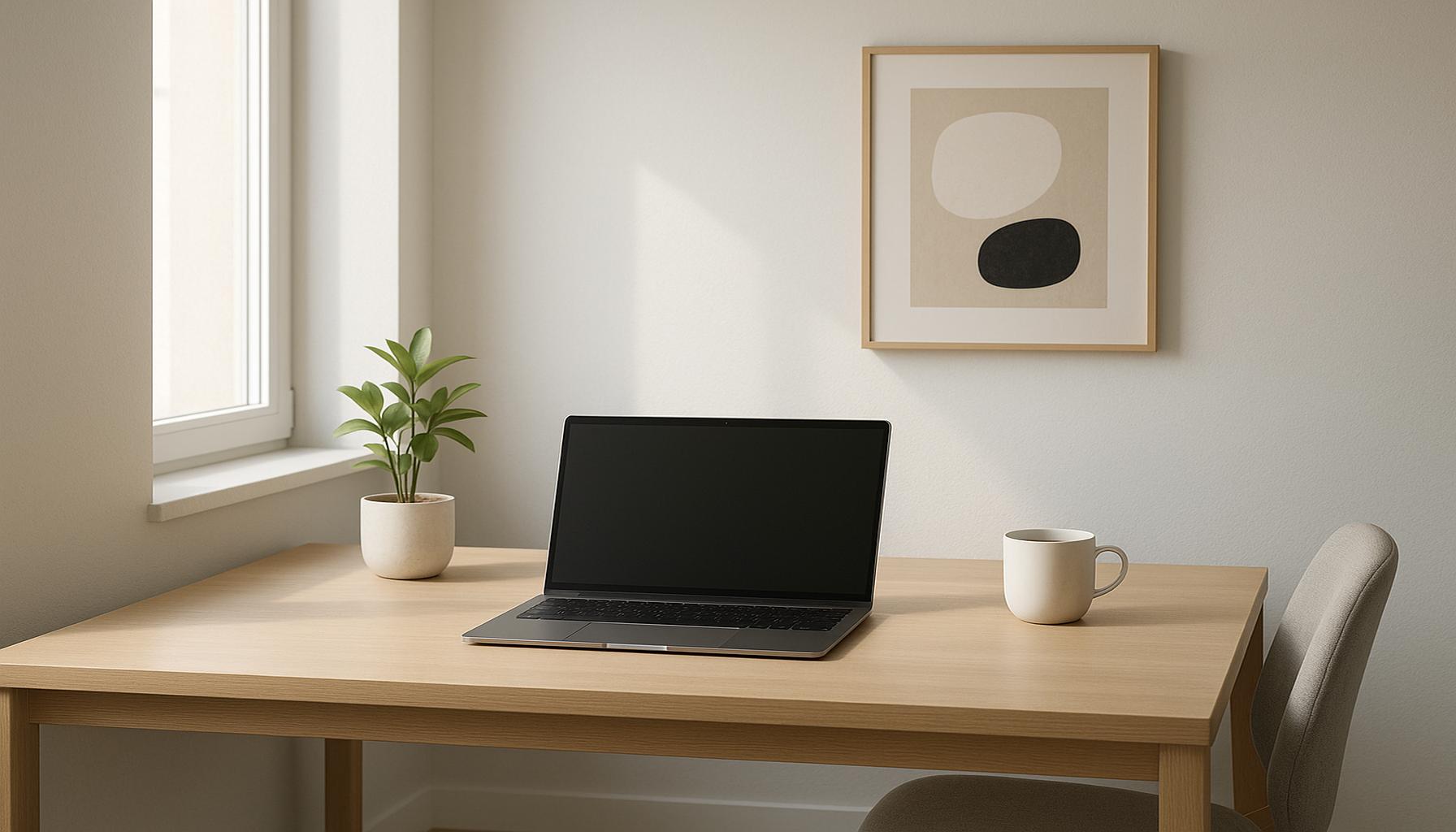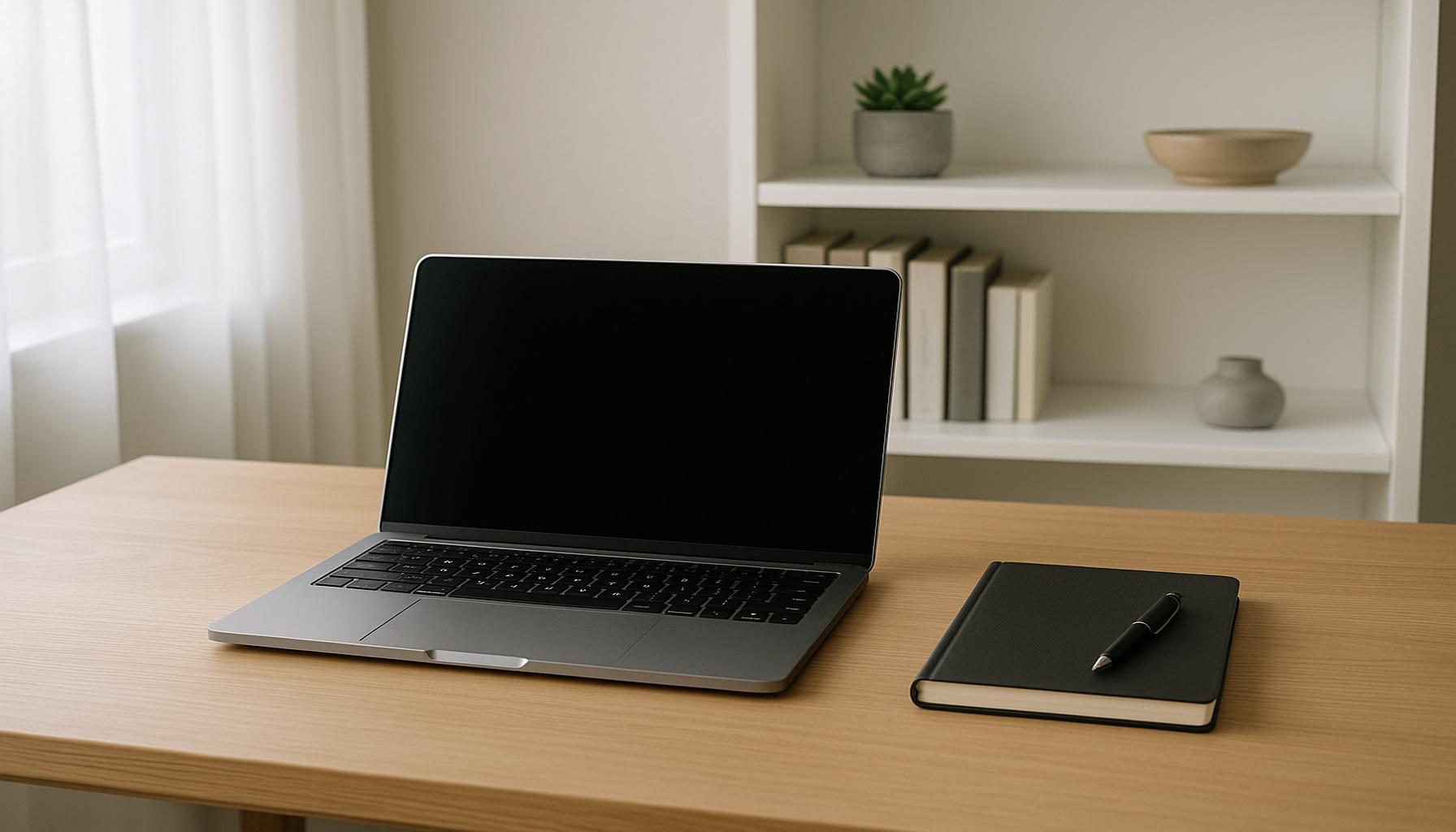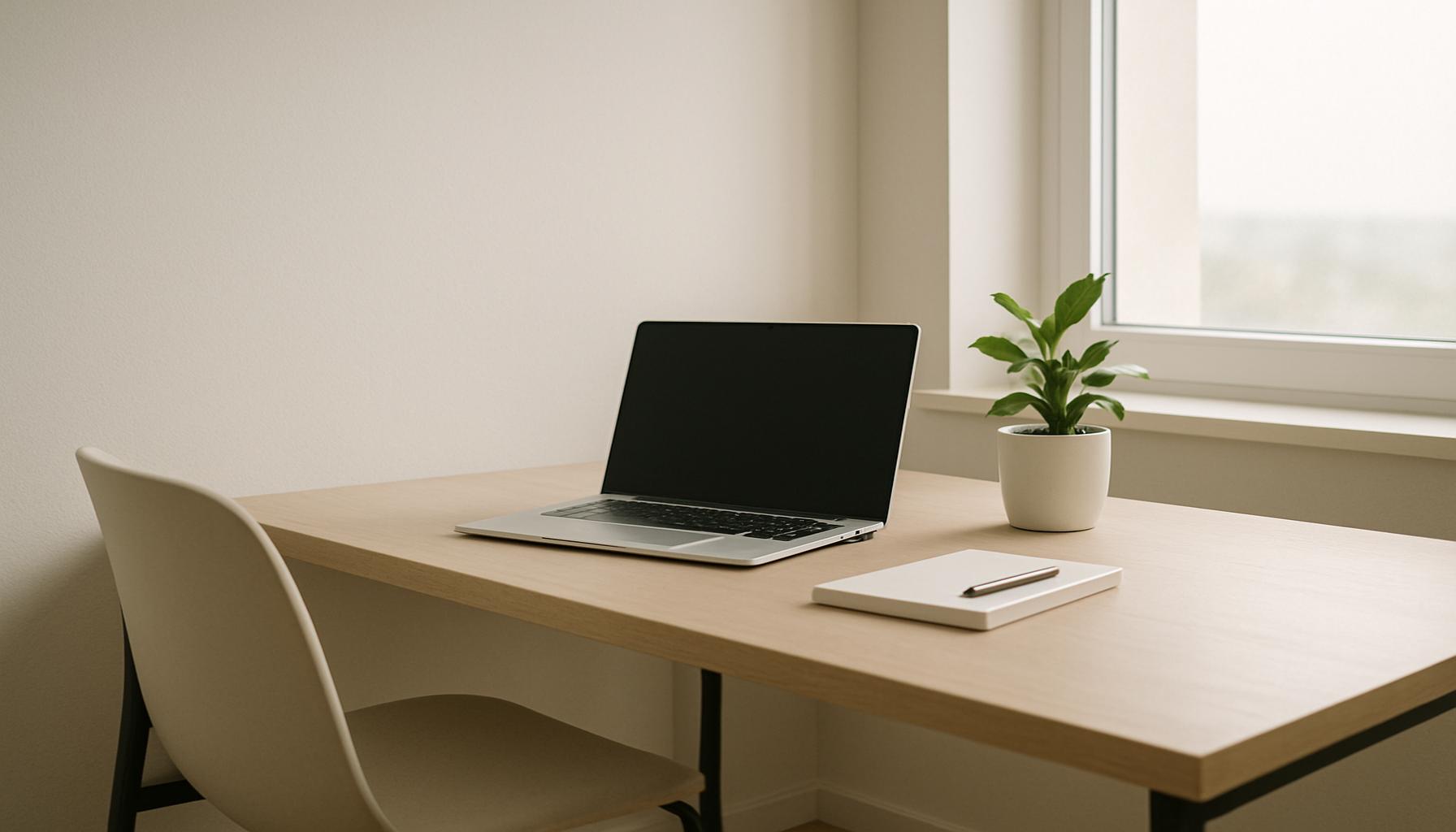Digital Minimalism: How to Reduce Noise and Increase Efficiency
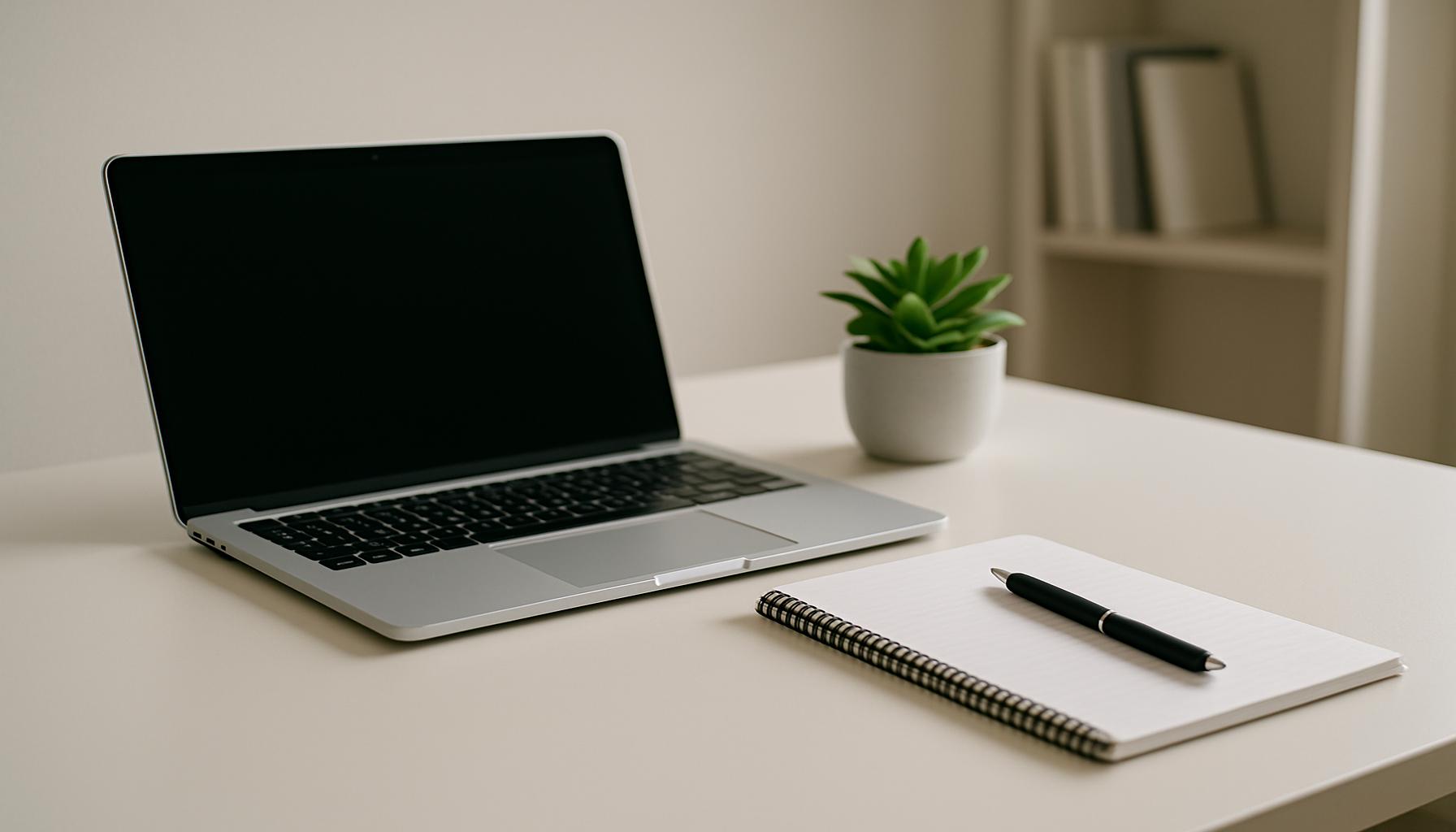
The Need for Digital Minimalism
In today’s hyperconnected society, where screens dominate our daily existence, the idea of digital minimalism has gained significant traction. It serves as a call to action for individuals to reassess their technology use and prioritize mental clarity over digital clutter. With average Americans reportedly spending over 10 hours daily on screens, often bombarded by endless notifications and distractions, the need for a focused approach to technology becomes increasingly urgent.
This pervasive digital engagement can stifle creativity, disrupt productivity, and ultimately contribute to feelings of burnout. The constant barrage of information can dilute our ability to engage deeply with tasks at hand. So, how can one navigate through this technological maze and reclaim focus? Here are several effective strategies:
- Prioritize meaningful content: Begin by curating your digital environment. Examine your social media feeds, subscriptions, and digital downloads. Choose to follow accounts and subscribe to content that genuinely enrich your life and align with your interests or values. For example, instead of mindlessly scrolling, one can focus on educational platforms, inspiring individuals, or community-focused pages that foster personal growth.
- Limit notifications: Notifications can be significant distractions. Consider disabling unessential alerts that interrupt your workflow. This includes app notifications, social media alerts, and even email pings. By maintaining only the crucial notifications you find useful, such as calendar reminders or messages from close family and friends, you can create a more focused working environment.
- Designate tech-free spaces: Establish specific zones in your home or office where technology is restricted. Bedrooms and dining areas, for instance, can become tech-free zones that foster better sleep and encourage meaningful conversations. Creating such designated areas can help nourish personal relationships and provide much-needed downtime away from screens.
Employing these methods can significantly cut through the digital noise. Each small adjustment not only improves day-to-day efficiency but also paves the way for a more purposeful use of time. As one immerses deeper into digital minimalism, the journey reveals how to align digital presence with personal and professional objectives. Consider exploring resources like Cal Newport’s book, “Digital Minimalism,” which offers insightful guidance and real-world examples, illuminating the path toward a more intentional engagement with technology.
As you embark on this transformative journey, remember that every conscious decision regarding technology can lead to a more enriching and fulfilling life. With the promise of better focus and decreased stress levels, digital minimalism truly stands as a vital philosophy in today’s digital age.
DISCOVER MORE: Click here to learn how to create a peaceful home
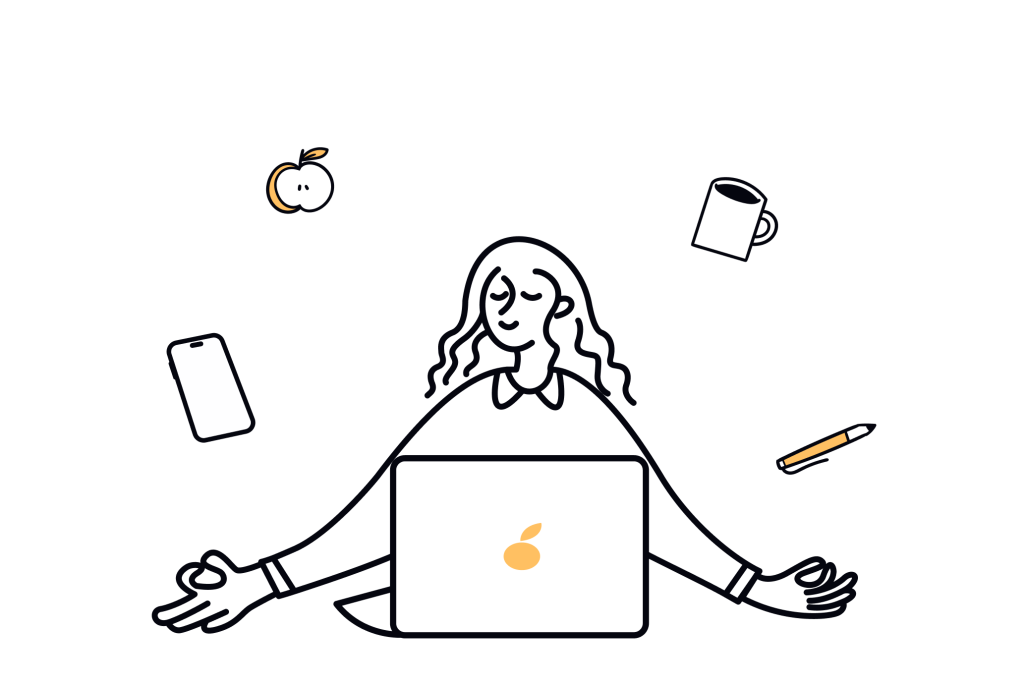
Strategies for Embracing Digital Minimalism
As individuals seek to cultivate a more intentional relationship with their digital devices, several practical strategies can lead to a reduction in noise and an increase in efficiency. Implementing these strategies will not only help manage the overwhelming influx of information but also enhance the overall quality of life. Here are some key approaches to embrace digital minimalism:
- Conduct a Digital Detox: Reassessing your digital possessions begins with a thorough detox. Spend a weekend or a few days without your devices to understand their impact on your daily life. This experience allows you to evaluate what technologies, applications, or content you truly find beneficial. After this period, gradually reintroduce only the essential elements that align with your values and contribute positively to your productivity.
- Set Boundaries Around Technology Use: Establish clear boundaries regarding when and how long you use technology each day. For instance, designate specific hours for checking emails or social media and go tech-free during meals or before bedtime. Such boundaries can prevent digital distractions from invading personal time and create a more focused environment for productivity.
- Utilize Productivity Tools Wisely: While technology is often seen as a productivity tool, it is crucial to choose the right ones and use them effectively. Platforms such as task managers or calendar apps can enhance workflow when utilized purposefully. Consider employing the ‘Pomodoro Technique’ or other time-management strategies within these applications to optimize your working hours and help maintain concentration.
- Engage in Mindful Consumption: Each time you engage with content online, be conscious of its value and your emotional response to it. Are you truly enjoying or learning from what you are consuming, or is it simply filling a void? Mindful consumption encourages users to focus only on enriching content, which enhances learning and growth while simultaneously reducing feelings of anxiety associated with digital noise.
Transitioning towards digital minimalism requires commitment and awareness. Understanding your technology usage patterns can lead to more informed decisions, further fostering a sense of control over your digital environment. This intentional approach leads to increased productivity by reducing wasted time spent on irrelevant digital distractions.
Moreover, embracing digital minimalism can open up spaces for offline activities that enrich your life. Cultivating hobbies or engaging in face-to-face interactions can rekindle creativity and provide a significant boost to overall mental health. As you simplify your digital landscape, you may uncover opportunities for deeper connections and personal growth.
The shift towards digital minimalism is not merely about reducing digital interactions; it embodies a larger philosophy—one that empowers individuals to reclaim their time and mental clarity in an age of perpetual distraction. By actively applying these strategies, you can foster a more enriching, efficient use of both technology and time, creating a harmonious balance that enhances daily living.
| Advantage | Explanation |
|---|---|
| Clarity in Focus | Digital minimalism promotes reduced distractions, allowing individuals to concentrate on meaningful tasks. |
| Enhanced Productivity | By eliminating excess digital noise, one can boost efficiency and achieve more in less time. |
In today’s fast-paced digital world, embracing digital minimalism is a transformative approach that encourages us to discern what truly deserves our attention. By focusing on fewer tasks with greater significance, you can foster a clarity in focus that is often overshadowed by the barrage of notifications and endless to-do lists. This intentional reduction of distractions can alleviate mental clutter, promoting a more organized and efficient work environment.Additionally, digital minimalism can significantly enhance productivity. When we streamline our digital engagement, we create opportunities for deeper concentration, leading to higher quality outputs. Rather than being perpetually reactive to incoming notifications or emails, adopting this minimalist mindset allows for a proactive approach to work and life. Thus, navigating the digital landscape becomes not only manageable but also more rewarding, as you align your activities with your core goals and values. Exploring digital minimalism presents an enriching journey toward a more mindful and efficient existence, inviting you to take deliberate control of your digital interactions.
DISCOVER MORE: Click here to boost your productivity
Building a Supportive Digital Environment
In addition to personal strategies, creating a supportive digital environment is vital for successfully embracing digital minimalism. This shift involves not only personal commitment but also an understanding of how to leverage technology in ways that enhance productivity and well-being. Here are some pivotal actions to consider:
- Curate Your Digital Space: Just as you would tidy your physical workspace for enhanced productivity, it’s crucial to organize your digital space. Start by decluttering your devices—delete unneeded apps, unsubscribe from irrelevant newsletters, and organize files into meaningful folders. A well-curated digital environment reduces distractions and makes it easier to access necessary information, ultimately leading to greater efficiency.
- Prioritize Privacy and Security: In our digital age, privacy concerns are paramount. Protecting your personal information not only grants peace of mind but also minimizes the noise caused by unwanted solicitations or data breaches. Utilize privacy-focused options, such as browser add-ons that block ads and tracking, preventing unnecessary distractions while browsing. By prioritizing security, you can focus more on productive tasks than on managing digital crises.
- Explore Minimalist Tech Solutions: Tech innovations often prioritize user experience and simplicity. Consider employing minimalist devices or applications that enhance functionality without unnecessary complexity. Examples include using simple task lists or streamlined communication tools. For instance, using a dedicated application for note-taking without social media distractions can significantly increase focus and productivity.
- Establish Tech-Free Zones: Carving out spaces in your home or work environment where technology is off-limits can promote mental clarity. Define specific areas—such as the dining room or bedroom—where digital devices are not allowed. This can facilitate more meaningful interactions and lower stress levels, allowing you to fully engage in discussions or relaxation without the pull of notifications and screens.
Additionally, leveraging community can enhance your journey into digital minimalism. Engaging with online forums or local groups that focus on minimalism can yield fresh ideas and accountability. Learning from others who share similar goals can inspire further changes and provide valuable perspectives on managing digital noise and distractions.
Statistics indicate that the average American checks their phone over 96 times a day, leading to fractured attention spans and inefficiency. This information highlights a pressing need to recognize our digital habits actively. Keeping this in mind, consider adopting a daily reflection practice to evaluate technology use—assessing what impacts efficiency positively or negatively.
Through continuous self-awareness, one can identify personal triggers that lead to excessive device use, thereby paving the way for lasting lifestyle changes. By tackling digital distractions from multiple angles, individuals can build resilience against the overwhelming nature of modern technology, fortifying their commitment to minimalism.
As society increasingly embraces digital minimalism, there arises an opportunity to redefine one’s relationship with technology fundamentally. Movement towards a more intentional and high-quality digital life can significantly influence productivity in both personal and professional spheres.
DISCOVER MORE: Click here to find out how
Embracing Digital Minimalism for a Productive Future
In our fast-paced digital landscape, adopting digital minimalism emerges not merely as a trend but as a necessity. This movement challenges us to critically evaluate our technology usage, aiming to reduce the noise that drowns out our focus and efficiency. By curating our digital spaces, prioritizing privacy, exploring minimalist tech solutions, and establishing tech-free zones, we pave the way for a more intentional approach to technology.
As highlighted throughout this exploration, the effects of excessive screen time are far-reaching, with the average American’s phone checks exceeding 96 times daily—indicative of fractured attention spans and decreased productivity. Yet, through consistent self-awareness and community engagement, we can redefine our relationship with technology. The act of reflecting on our daily habits fosters growth and facilitates the implementation of strategies that enhance efficiency.
Ultimately, the shift towards digital minimalism signifies more than a reduction in distractions; it represents a commitment to improving our quality of life and work. By embracing this philosophy, we can reclaim our time, gain mental clarity, and foster meaningful connections—both online and offline. As we contemplate the future of our digital environments, let us prioritize substance over the sheer volume of information and cultivate a landscape where productivity thrives in harmony with well-being.
As you embark on this journey, challenge yourself to explore the myriad ways in which simplifying your digital interactions can lead to transformative outcomes. The potential is yours to unlock—a less cluttered online experience awaits.
